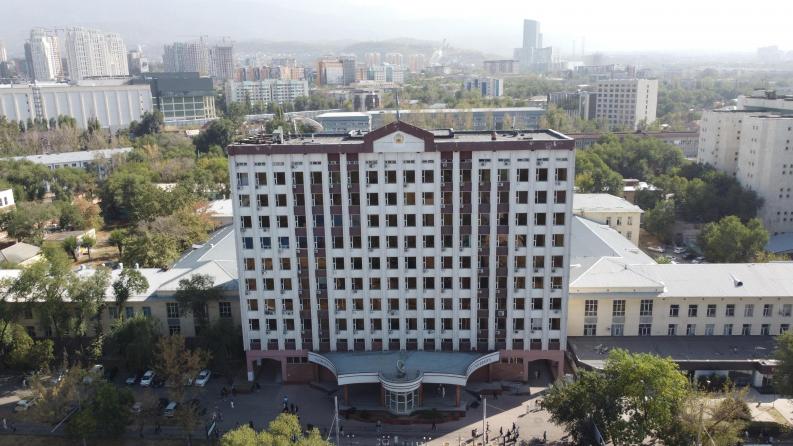in emergencies at
Satbayev University
What to do in case of an emergency
Emergency (ES) — circumstances that are life-threatening to people that have arisen as a result of a disaster, industrial accident, terrorist attack, military operation or natural disaster, such as an earthquake or avalanche. To protect people from danger, such services as Ministry of Emergency Situations and the Civil Defense Headquarters have been created. In case of danger, it is necessary to notify special services and call for help.
Call 112!
This is the number of the dispatch service at Emergency Situations Department. You can call from a mobile phone without SIM card.
Other emergency phone numbers:
Fire extinguishing service 101;
Police 102;
Ambulance 103;
Emergency gas service 104;
Anti-terrorist hotline 110.

in the mountains

and action plan

for the affected
population in Almaty
What dangerous situations it is necessary to be prepared for in Almaty
Almaty is located in an earthquake-prone zone, small, barely noticeable tremors constantly occur here, but only four major earthquakes have occurred here over the past 120 years. It is necessary to know what to do in case of an earthquake, but there is no need to be frightened of it. The city is located in the foothills; every resident can go to the mountains at any time. The main danger that awaits a person in the mountains is mudslides and avalanches. Ministry of Emergency Situations will warn you about the increased danger via SMS. If you receive such a warning, it is not recommended to go to the mountains. However, there are no floods in Almaty and landslides occur very rarely. The city authorities monitor the situation and warn about what is happening.
Earthquake
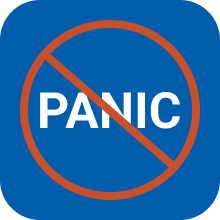
Don't panic
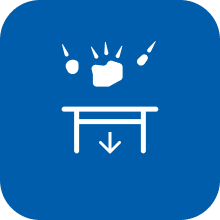
Get under the bed or table

Do not use the elevator

Do not stand near trees or buildings

Do not enter the building immediately
Fluctuations of the Earth's surface resulting from the instability of the Earth's crust. This natural disaster occupies one of the first places in terms of the number of human victims. The main danger in a strong earthquake is panic and everything that can collapse and cause injury: buildings, poles, fences, walls and ceilings, flying bricks, glass, signboards, etc.
What to do in case of an earthquake
-
You're in the building
- If you are on 1st or 2nd floor, go outside. You have 15-20 seconds to do this.
- If you are on 3rd floor or above - you do not have time to get out. Find a safe place in the apartment.
- Do not use the elevator.
-
A safe place
- At the inner wall, in the corner, in the doorway, at the support column;
- In the bathtub or under the table;
- Away from windows, mirrors, glass, heavy furniture;
-
You are outside
- Move to an open place away from buildings and power lines, do not approach electrical wires.
- If you are in the car, stay in the open, not leaving it until the tremors stop.
-
You are trapped in a blockage
- Do not panic, check if you have the opportunity to contact the rescue services.
- Try to determine the space and find water.
- Do not light a fire to avoid an explosion from a possible gas leak.
- Give signals about yourself (knock iron on iron: on the battery, pipes, etc.).
-
After an earthquake
- Make sure that you are not injured, provide assistance to those who are easily injured and call an ambulance for those who are seriously injured.
- Free people from the rubble that is easy to disassemble.
- Check the water supply, gas, electricity. If there is damage, turn off everything you can.
- If there is a gas leak, open the windows and doors, leave the room and call the gas service.
- If a fire has started, put it out. If it fails, call the fire department.
- Make sure that the stairs, the building and the objects in it are safe. If not, call the rescuers.
Even if the buildings remain intact – do not enter them immediately, there may be more aftershocks. Make sure that everything has finished, and only then return to normal life.
Fire

Turn off the gas
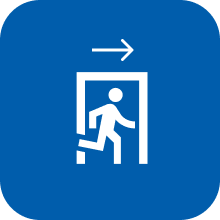
Get out of the building quickly

Do not extinguish the fire with water

Stay calm

Call rescuers and medical workers
Uncontrolled combustion, which cause material damage and harms the life and health of citizens. Forest and steppe fires cover a large area, and a fire in the city claims many human lives.
Approximately 80% of fires occur due to human fault because of violations of fire safety measures or faulty equipment. Therefore, the best way to deal with a fire is to prevent its occurrence.
-
Fire safety
- Do not use uncorrected electrical appliances. Fix all the outlets and electrical wiring in the house.
- If you live in a dormitory and you have a broken socket or bare wires, call the repair service immediately.
- Flammable liquids (solvents, acetone, aerosol) should be kept in an isolated place away from heat, fire and the sun.
- Do not heat varnishes and paints on a gas stove, do not wash in gasoline; do not dry laundry over the stove.
- Do not leave the fire or gas stove unattended.
- Do not use the towel near the gas stove as it can easily catch fire. Buy a potholder.
- Do not leave the heaters unattended, do not cover them with a cloth.
- Do not light candles, do not smoke next to curtains or in bed, do not leave cigarettes unlit.
- When leaving the house, turn off everything that can give a spark, cause a gas leak or catch fire.
-
In case of fire
- Immediately extinguish what caught fire, do not let the fire get out of control.
- If a liquid (oil, solvent) burns, do not extinguish it with water, there will be an explosion. Cover the fire with a lid or a thick cloth.
- If a fire breaks out, do not try to extinguish it. Immediately call the fire department, turn off the gas and electricity, and leave the apartment.
- Do not open windows and doors so that the air flow does not increase the fire.
- Do not go down drainpipes, sheets, ropes, do not jump out of the window (starting from the 4th floor, every second fall is fatal).
- It is advisable to cover your mouth and nose with a wet cotton-gauze bandage or a wet towel.
- Do not use the elevator.
-
The fire started in another apartment
- Turn off the gas and electricity.
- Do not try to exit through a smoky corridor or stairs (smoke is very toxic, hot air can also burn the lungs).
- If you live on the 1st or 2nd floor, go down from the balcony.
- If you cannot leave the apartment – plug all the gaps under the doors with wet rags, fill the bathroom and other large containers with water, remove the curtains, move away from the windows all objects that can catch fire and pour water on the floor and doors.
-
The fire started in the crowded place
- When entering any unfamiliar building, remember the path and location of the evacuation exits. Check if they are open.
- As soon as you smell smoke, leave the room in the safest way. Try not to get into the crowd. Call the fire department.
- Once in the crowd, bend your elbows and press them to your sides, clenching your fists. Tilt the body back, resting your feet, and try to restrain the pressure with your back, freeing up space in front and moving slowly.
- Do not enter a place where there is a high concentration of smoke. Do not try to escape on the overlying floors or in remote rooms.
- If, after all, the situation develops in such a way that you cannot leave the building, find the most open place where there is nothing to burn, and wait for the help of firefighters.
-
If a person is on fire
- Push the person to the ground, cover him with a thick cloth, such as a coat, to block the air flow.
- Call an ambulance and give first aid.
-
First aid to victims
- Stop exposure to high temperature, extinguish the flame on the clothes, take the victim out of the affected area.
- Wet clean bandages should be applied to burns. Minor burns can be washed with running cool water for 10-15 minutes.
- If the burn is large, the victim needs to be wrapped in a clean sheet and urgently taken to the doctors.
- People who have inhaled smoke should be taken out into clean air, and, if necessary, artificial respiration should be performed.
- When transporting a wounded person to a medical institution, provide him with rest.
The main injuries in fires are burns and carbon monoxide poisoning.
-
Prohibited
- To leave the victim alone.
- To apply ointment, cream, vegetable oil to the burned area, sprinkle with powders, use cotton wool.
- To puncture bubbles.
- To remove the remnants of clothing from the burn surface.
- In case of a burn of the mouth cavity, give some drink and something to eat.
Avalanche

Check out the weather forecast
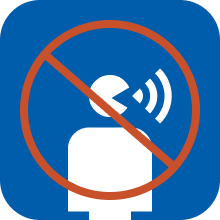
Don't shout
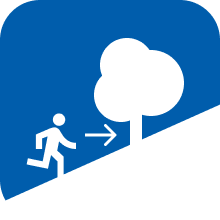
Try to be closer to the trees

Stay calm

Call the emergency service
Avalanche is a mass of snow falling or sliding off the steep slopes of mountains. This is one of the most insidious dangers in the mountains at any time of the year. One cubic meter of snow can weigh from 60 to 800 kilograms. Such a mass of snow demolishes buildings and breaks equipment. People caught in an avalanche suffocate from snow dust penetrating into the respiratory tract, and avalanches of wet snow literally bury the person trapped in them alive.
Therefore, the main safety rule is not to depart from safe routes during the avalanche season from November to April and not to neglect the warnings of Emergency Situations Ministry, that is, not to go to the mountains if a storm warning is announced.
-
If you find yourself in the mountains in winter
- Before you go to the mountains, look at the weather forecast and warnings in "Darmen" free mobile application.
- Never shout. Avalanches can descend from the noise and cry of a person.
- Do not go on the route if there is or has just been a heavy snowfall, in poor visibility conditions, with a sudden change in the weather.
- Try to move only under the protection of obstacles standing in the way of a possible avalanche (rocks, bushes, trees) or along the ridge of a mountain where an avalanche cannot be.
-
Avoid avalanche-prone slopes
- Smooth, rocky slopes that do not have rocks, trees and bushes protruding above the snow surface.
- Slopes illuminated by the sun, with wet snow.
- Slopes with traces of fresh avalanches or landslides of snow, with large mountains of snow or snow cornices.
- It is dangerous to move if large snow eaves hang over the slope or snow has settled with "u-uh!" characteristic sound.
Avalanche is dangerous not only for those who stand in its way, but also for those who are close enough because the avalanche forms a powerful shock wave. This is a wave of air, as in an explosion, which breaks trees, throws stones both in the direction of its movement and in the opposite direction.
-
If an avalanche starts
- The speed of snow can reach 200 km/h. In such conditions, every minute is important to get out of its way and be saved. It is necessary to go parallel to the avalanche far to the side, as far as possible.
-
What should you do if you are caught in the avalanche?
- Move as quickly as possible to a shelter (a rock, a large stone), behind which you can hide.
- Get a foothold in the snow with an ice axe, knife, ski stick.
- Take the pose of least resistance to snow.
- Drop the backpack and skis, as well as other excess cargo.
- Try your best to stay on the surface.
- Cover your face with a scarf or a sweater collar, protect your mouth and nose with your palms.
- When the snow starts to slow down, stick any object out so that rescuers notice it.
- When stopping an avalanche, maximize the space near the face and chest.
- Constantly destroy the ice crust formed from breathing.
- Determine where the top is, where the bottom is, for example, by releasing saliva from the mouth.
- Don't shout: you can hardly be heard from under the snow. If you are buried, relax and conserve oxygen.
- Listen to the sounds on the surface to give a signal to your comrades.
- In the absence of help, dig yourself out, immediately tamping down the removed snow and in no case give in to panic.
- Do not lose your composure, do not let yourself fall asleep, remember that they are looking for you (there are cases when people were rescued from under an avalanche on the fifth and even the thirteenth day).
-
If someone got caught in the snow in front of your eyes
- Mark this place and call for rescuers.
- Search for the missing person should follow the movement of the avalanche below. As soon as you find it, free your head, clean your mouth and airways.
Never go out into the mountains alone, especially during the avalanche season. Remember that, as a rule, it is the exit of a person on a snowy slope that leads to the catastrophe.
Mudflow

Pack an alarm bag

Close all doors and windows

Turn off the gas

Call the emergency service

Follow the instructions of the rescuers
Mudflow (mud stream) is a rapid flow of great destructive force consisting of a mixture of water, sand and stones that suddenly appears in the basins of mountain rivers as a result of intense rains or rapid snowmelt.
Over the past 160 years, Almaty has experienced six catastrophic mudslides. One of them occurred from July 8-9, 1921 and claimed the lives of more than 600 people. Huge boulders lying in the area of Pushkin, Kunayev and Dostyk streets in Almaty are a consequence of this tragedy.
Another mudslide occurred on July 7, 1963, when the moraine-glacial lake Zharsai in the upper reaches of the Issyk River was breached on a hot sunny day. The mudslide demolished a hotel and a restaurant near the lake and rushed straight to Almaty, the exact number of deaths is still unknown.
To avoid the repeat of this disaster, in Alma-Ata in the second half of the 60s, unprecedented work was done in the world history to protect against mudslides - a dam was created on Medeu, which is now a landmark of Almaty. Nevertheless, in some areas of the city, the danger persists.
-
How to escape from mudslide
- If a person is caught in a mudflow, it is almost impossible to escape. Therefore, it is possible to escape from the mudslide only by avoiding it, that is, to evacuate. To carry out an emergency evacuation, it is necessary to know the nearest safe places – these are the slopes of mountains and hills.
-
When evacuating, it is necessary
- Remove the most valuable property into the house, things that cannot be taken with you, hide from the effects of moisture and dirt.
- Turn off electricity, gas, water supply.
- Remove flammable substances from the house to remote pits or free-standing cellars (basements).
- Close doors, windows and air vents tightly.
- Follow the instructions of the rescuers.
After the end of the mudslide, make sure there is no repeated threat, and only then you can return to help the victims.
Landslide

Explore the area in advance

Pack an alarm bag

Close all doors and windows

Turn off the gas

Stay calm
Landslide is a dangerous natural phenomenon, the displacement of the earth from the slope down. This is one of the most frequent causes of death and damage to structures in mountainous areas. As well as from a mudslide, a person cannot protect himself from a landslide only by evacuation.
-
Preparing for landslide
- Study the terrain, know the possible places and boundaries of landslides, as well as the nearest places for evacuation.
- Think over your actions in advance in case of a landslide threat.
- If there are signs of a landslide, inform Emergency Situations Ministry, the administration of the rural district, neighbors.
-
Signs of incipient landslide
- Gaps and cracks in the ground, on the roads;
- Violations and destruction of underground and ground communications.
- Displacement, deviation from the vertical of trees, pillars, supports, uneven tension or wire breakage.
- Curvature of the walls of buildings and structures, the appearance of cracks on them, jamming of doors and windows.
- Changes in the water level in wells, boreholes, in any reservoirs, water seepage on slopes.
-
When evacuating, it is necessary
- Remove the most valuable property into the house, things that cannot be taken with you, hide from the effects of moisture and dirt.
- Turn off electricity, gas, water supply.
- Remove flammable substances from the house to remote pits or free-standing cellars (basements).
- Close doors, windows and air vents tightly.
- Follow the instructions of the rescuers.
If you find yourself on the surface of a moving landslide area, you should, if possible, move up and closer to the edge of the landslide. Beware of boulders, stones, fragments of structures, an earthen rampart, scree rolling down from above (with a high rate of sliding of a landslide, a strong push is possible when it stops).
After the end of the landslide, people who hastily left the disaster zone need to make sure there is no repeated threat and only then return to this zone to help the victims.
Frequently Asked Questions
-
What is "high alert mode" and emergency?
- High alert mode. At this time, you need to prepare for the threat, for example, to collect an "alarm suitcase" and documents for evacuation.
- Emergency mode. The danger has already arisen. It is necessary to leave a dangerous place or provide assistance to the injured. Do not leave your home unless absolutely necessary. Special services will inform you about what else to do.
- State of emergency (emergency state). The most extreme measure in a situation of serious danger. The work of production and public transport stops. They may impose restrictions on movement, curfews and quarantines, strengthen inspections and security.
There are several modes that are designed to protect people.
-
Is it possible to burn bonfires and garbage on the territory of residential buildings, garden houses, dachas?
- Yes, this is allowed, but it is necessary to use special devices and constantly monitor the process of combustion and smoldering, so that flames and sparks do not get on the combustible elements of buildings, dry vegetation, stored combustible substances and materials.
- When making a fire, be sure to stock up on extinguishing agents. At the end of the combustion process, the remains of burning and smoldering materials must be extinguished until the smoldering is completely stopped.
- It is not allowed to build fires on peat soils, under the crowns of trees, during the wind.
-
In what cases are MES workers called
- Rescuers are specially trained people with the skills, knowledge and equipment to save people's lives and their property. They are called when a person is in danger:
- If you are drowning, you are on the water.
- If there was a fire or a person was trapped under a blockage, for example, when a building collapsed.
- If you are in the road accident and you are trapped in the car.
- If you have slammed the door, you cannot open it, and there may be a gas leak in your apartment, or there is a child or a sick person who may need help at any time.
- Do not call rescuers if there is no threat to life. In no case should you call rescuers for a trifling reason.
-
Will my mobile phone work in an emergency situation?
- Mobile phone is a tool for communication under normal circumstances. However, in an emergency, mobile phone systems often stop working due to overload, damage and loss of electricity. In this case, it is necessary to have a simple radio, which is used by rescuers for urgent messages.












